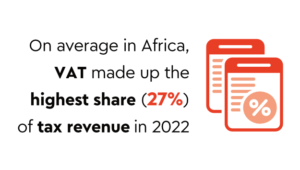South Africa has officially joined almost 50 African states in signing the African Continental Free Trade Area (AfCFTA) agreement, which has been driven by the AU to boost intra-Africa trade through a single market for goods and services across the continent.
AfCFTA is expected to cover a market of at least 1 billion people, as well as a GDP of US$3.3 trillion across all 55 AU-member states. It will be the world’s largest free trade area since the World Trade Organisation was formed in 1995. A trade deal of this magnitude could be the start of a push the continent desperately needs to help stem unemployment in Africa, where 70% of young people live on less than US$2 a day.
Many of the 44 AU-member states that signed the agreement at the Extraordinary Summit of AU Heads of State and Government in Kigali in March were waiting for South Africa and Nigeria to add their names to the deal. With President Cyril Ramaphosa committing South Africa to the agreement at a Heads of State meeting in Nouakchott, Mauritania in July, the pace has stepped up. He’s also urged Nigerian President Muhammadu Buhari to sign. ‘By trading among ourselves, we are able to retain more resources in the continent,’ Ramaphosa said at a recent conference in Abuja, Nigeria.
Despite its flat economic growth, South Africa is the continent’s powerhouse, along-side Nigeria. The two countries account for about half of Africa’s GDP. It’s easy to see why other African nations have been anxious to see them come on board. South Africa waited until it had completed negotiations, as well as domestic legal processes, before signing, while the Nigerian president intimated he would sign soon. South African Trade and Industry Minister Rob Davies said his department would present the proposal to Cabinet ‘without delay’ for ratification by Parliament. ‘We are very happy to be part of this club.’
The trade agreement will become effective once it has been ratified by the parliaments of at least 22 AU member countries. It is expected to increase trade flows significantly and open doors for intra-African market access. Removing tariffs and costs under the agreement should cut the cost of production and encourage economies of scale, while diversification will also be key, as export growth could be spread across sectors.
The tougher challenge will be ensuring countries move swiftly to put industrial policies in place, and then act on them. Africa needs a sustained shift to industrialisation, with less focus on natural resources and more on value-added products and manufacturing, the latter which currently comprises about 10% of total GDP in Africa.
With a far larger size of the market, African nations are also hoping that foreign direct investors will be encouraged to plough increasing amounts of money into industry and manufacturing. A report released in July by the Cairo-based African Export-Import Bank says intra-African trade makes up only 15% of Africa’s total trade, compared to Europe’s 67%. The continent’s share of global trade is less than 3%.
Africa has been blighted by fragmentation for decades and is also facing rising trade protectionism in key export markets around the world. But it could turn this threat into an opportunity. Upping its game on manufacturing, linking across borders and boosting trade within its own potential massive market could signal a breakthrough for economic growth on the continent.















